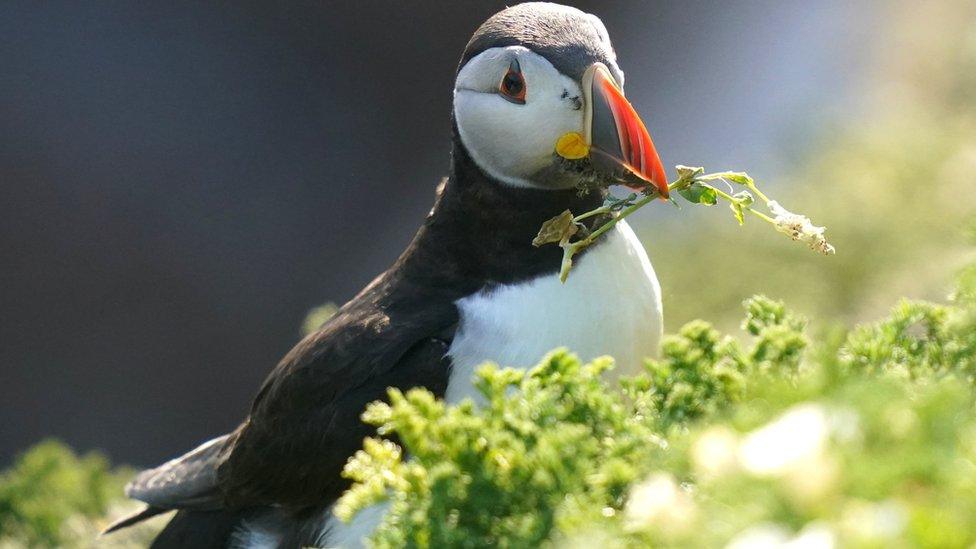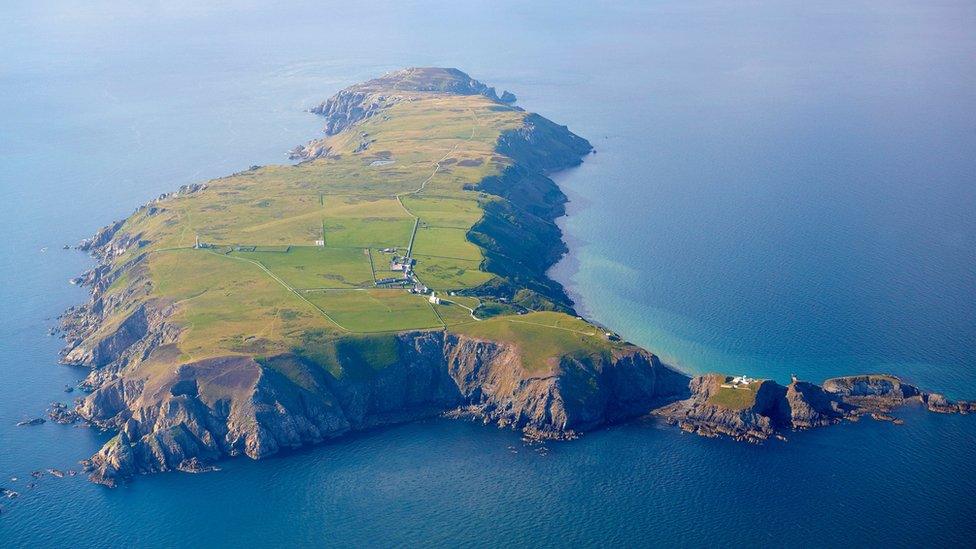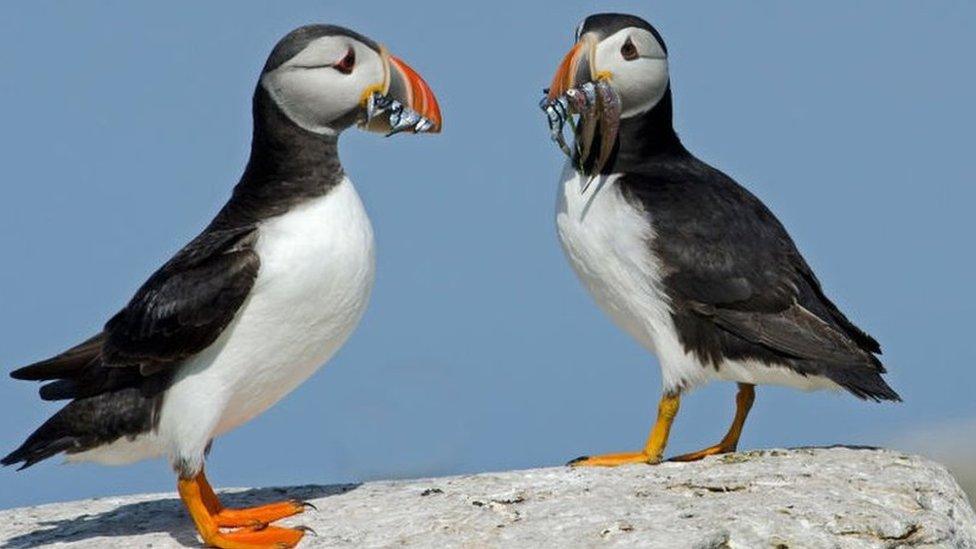Lundy Island wild bird numbers soar
- Published

Puffin numbers have increased from 13 in 2000 to 1,335 in 2023
Bird populations have soared on Lundy Island with some 40,000 rare seabirds thriving on its shores, said the RSPB.
The island in the Bristol Channel is home to 95% of England's breeding Manx Shearwaters, a species that was once on the brink of extinction on Lundy.
Thanks to a project that eradicated rats from the island in 2006, the Shearwater population has soared from about 600 in 2001 to more than 25,000.
Puffins have increased in number from 13 in the year 2000 to 1,335 in 2023.
The island has also attracted new arrivals, such as Storm Petrels, which first bred on Lundy in 2014 and now have more than 150 pairs.
The RSPB said the surge in numbers was thanks to a partnership between Natural England, the Landmark Trust and the National Trust.

Campaigners say Lundy should be designated as a Special Protection Area for seabirds
Paul St Pierre, RSPB conservation officer, said: "If we can restore over 30,000 birds to one small island in the Bristol Channel, just imagine how much could be achieved if everyone came together to restore nature right across the UK.
"Projects like this are achieved through decades of conservation science, expertise, funding and countless volunteer hours.
"Everyone can play a part."
The project leaders are calling for Lundy to be designated as a Special Protection Area for seabirds to reduce risks to birds.
Mr St Pierre said: "While Lundy is protected for many of its wonderful species, the surrounding waters still lack any protection for seabirds."

Follow BBC News South West on X (formerly Twitter), external, Facebook, external and Instagram, external. Send your story ideas to spotlight@bbc.co.uk, external.
- Published23 October 2020

- Published28 May 2019

- Published30 July 2013
